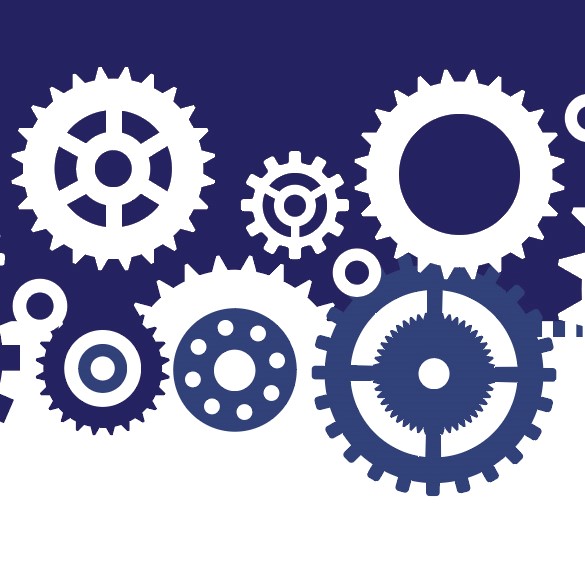TALK TO PROFITABLE, fast-growing MSPs and you’re likely to find that they’re serious about employing standard processes, using standard tools, and selling standard solutions. Why? It increases efficiency, deepens expertise, and makes scaling the business easier.
“”Whenever you can standardize, you simplify the business,”” says Daniel Wang, chief automation officer at Intelligent Technical Solutions, a managed service provider serving the Las Vegas, Phoenix, Los Angeles, and Chicago areas. “”You make it easier for employees to follow, and you have that [economy] of scale.””
Lack of standardization is why so many MSPs struggle to grow, says Wang, who is also CEO of startup MSPbots, a Chicago-based robotic process automation (RPA) company. “”They just keep fixing the same problem over and over,”” he says.
They also make that process harder than it needs to be. Consider a flow chart for solving firewall problems, says Paul Dippell, CEO of Service Leadership, a consulting and benchmarking firm serving IT solution providers. “”If all your customers have Cisco firewalls, that flow chart and everything downstream in your operation from that flow chart is all the same.”” Add a second firewall, and your flowchart doubles in complexity.
In addition, MSPs that support a hodgepodge of hardware and software often need more staff, and higher-skilled, higher-paid ones at that, to meet SLAs, Dippell says. “”They do solve more of the huge number of problems coming in because they get smarter people. So customers are happier, the employees are happier … but they go broke.”” This usually leads them to standardization, he says.
The Challenges
There are hurdles to embracing standardization. “”It’s hard because you have to find what really works,”” says Michael Kahn, founder and executive partner at PCDataNet, a managed service provider in Elgin, Ill.
The IT industry’s speed of change is a hurdle too, Wang says. After you’ve defined a process, made sure it works, and trained employees to follow it, your RMM or PSA vendor may release a new version and you have to start over, he explains.
According to Dippell, MSPs are often hesitant to dictate to clients what tools to use or force them to change out equipment. Overcoming that reticence is essential, though.
“”Imagine you allow the customer any brand of laptop, any brand of desktop, any brand of server, any brand of firewall, any brand of router,”” he says. “”The number of different processes you’d have to write is effectively infinite. The best practice is rabid, disciplined, exceptionless standardization of the hardware and software the customer runs.””
Enforcing the Rules
This can be a difficult conversation for MSPs, Dippell says, but the key is helping customers understand the value to their business as well as the risk the MSP is assuming in providing service for one flat fee—whether an issue takes 20 minutes to resolve with a low-cost employee or many hours with a highly skilled technician. “”[The MSP is] taking all of this operating risk off of you. The quid pro quo is you run the equipment I tell you to run.””
Wang doesn’t hesitate to deliver that message. He’s signed up clients who literally just bought a Cisco switch or $2,000 firewall not included among his standard solutions. He’ll support that equipment in the short term, or help the customer sell it on eBay, but is willing to walk away if the customer will not move to the standard stack. “”We’re not 100% everything standardized, but that’s what we strive for,”” Wang says. “”We don’t want the technician to learn five different kinds of firewall.””
PCDataNet, for its part, moved to standardized offerings as part of its relaunch last August to a managed services model, Kahn says. “”Our clients had everything and anything. People were picking and choosing what services they wanted, and that ended up over the years causing a lot of frustration,”” he says, adding that managing a variety of technology “”prolongs the time that it takes us to help them.””
Now Kahn offers customers two options for each offering, and although he won’t refuse to support an alternative if the client insists, he does try to sway them toward the standard stack. “”We let them know we’ve taken a … deep dive as to which of these vendors are truly the best, and that’s why these are the ones that we put in our offerings.””
MSPs need to standardize their own internal tools as well, particularly if they have acquired companies that may be using a different RMM or PSA, for instance. With one set of applications, “”they can move employees from function to function without having to train them on a different set of tools,”” Dippell says.
He recommends a quick, though painful, surgical approach to standardizing disparate tools rather than drawing the process out. “”It’s not hard to find an MSP that’s four or five years into standardizing their tools and not done,”” Dippell notes.
Importance of Documentation
A critical aspect to standardization is documentation. “”If there is no documentation, it did not happen,”” quips Kahn, who was responsible for over 400,000 desktops and 22,000 servers when he worked at a telecommunications company. He applied the lessons he learned about processes there to PCDataNet and worked with his team to refine them. “”We document everything.””
He uses both IT Glue and Liongard to do so, and refers to them as “”living documents.”” He explains, “”Technology’s constantly changing and we need to make sure that we also are changing as things progress.””
Even with documentation, sticking to a standardized process depends on top-down buy-in and vigilance, Wang says. Whenever there’s an issue, first determine if it’s a standard operating procedure (SOP) problem or a people problem, he adds. If it’s an SOP problem, the process may need to be updated or simplified. If it’s a people problem, management needs to educate staff on the importance of following process.
Humans are humans, though, so Wang recommends identifying and automating repetitive processes through scripting. “”Because once you automate it, it’s almost 100% accuracy.””
Kahn, a longtime scripter himself, agrees. “”I have found that usually if you can fix one machine, you can fix many. And if you were to write your scripts in such a way that you can correct the issues, you’re saving your company a lot of money by not having to rely on one of your engineers or a network technician to manually run through the steps.””
Wang’s startup firm MSPbots is creating bots using RPA to automate rules-based processes in the ConnectWise Manage PSA platform initially, with plans to add more bots over time. For example, a bot would do things like prompt an employee to enter their time immediately, attach an agreement to a ticket, or search an internal wiki for more information.
While bots may be the future, MSPs who want to simplify business processes and boost efficiency and profits can—and should—get started with standardization now.
















